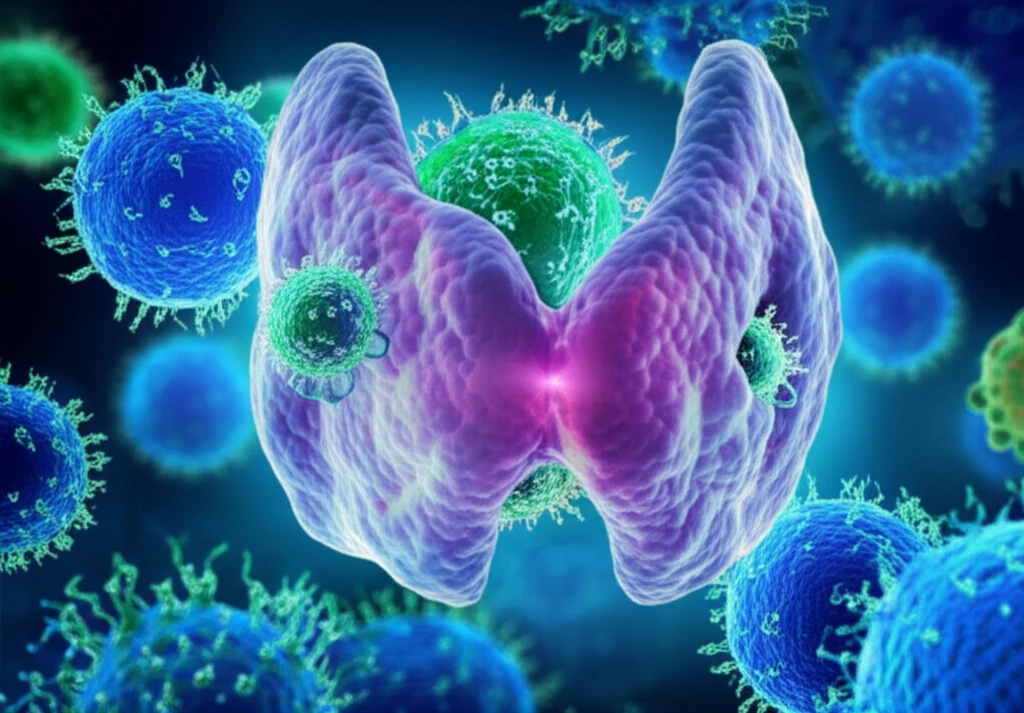
Thyroid Cancer and Your Body: Unlocking the Secrets of Tumor Microenvironments
"New research sheds light on how tumor-associated macrophages (TAMs) influence papillary thyroid carcinoma, offering hope for better treatments and understanding."
Papillary thyroid carcinoma (PTC) is the most frequently diagnosed endocrine malignancy, and its incidence has been steadily increasing over the past two decades. This rise is attributed to advances in diagnostic procedures, which allow for earlier detection. Due to the typically slow progression of PTC, managing these tumors has become a critical area of focus in endocrinological oncology.
The tumor microenvironment—the area surrounding the tumor that includes blood vessels, immune cells, signaling molecules, and the extracellular matrix—plays a crucial role in cancer development and progression. This complex environment influences how tumors grow, spread, and respond to treatment. Researchers are intensely studying the properties of the tumor microenvironment and the prognostic features of primary tumors to improve patient outcomes.
One key element within the tumor microenvironment is tumor-associated macrophages (TAMs). Macrophages are immune cells that can either promote or suppress tumor growth depending on their activation state. This article delves into a recent study that examined the relationships between specific types of TAMs and various clinical and pathological features of papillary thyroid carcinoma. By understanding these interactions, we can potentially develop more effective treatment strategies.
What Are Tumor-Associated Macrophages (TAMs) and Why Do They Matter?

Tumor-associated macrophages (TAMs) are a significant component of the tumor microenvironment. These immune cells originate from monocytes, which differentiate into two main subtypes: M1 and M2-like macrophages. M1 macrophages are classically activated and typically exhibit anti-tumor activity. M2-like macrophages, on the other hand, are alternatively activated and can promote tumorigenesis.
- Neovascularization: TAMs stimulate the growth of new blood vessels, providing the tumor with nutrients and oxygen.
- Invasion and Metastasis: They promote the spread of cancer cells to other parts of the body.
- Immune Suppression: TAMs can suppress the body’s natural anti-tumor immune responses, allowing the tumor to evade detection and destruction.
Implications and Future Directions
This research underscores the multifaceted nature of TAMs in papillary thyroid carcinoma and highlights their potential as therapeutic targets. Further molecular studies are needed to fully elucidate the roles of these cells in tumor progression and dissemination. By gaining a deeper understanding of TAMs, we can pave the way for novel therapies that improve outcomes for patients with thyroid cancer.
